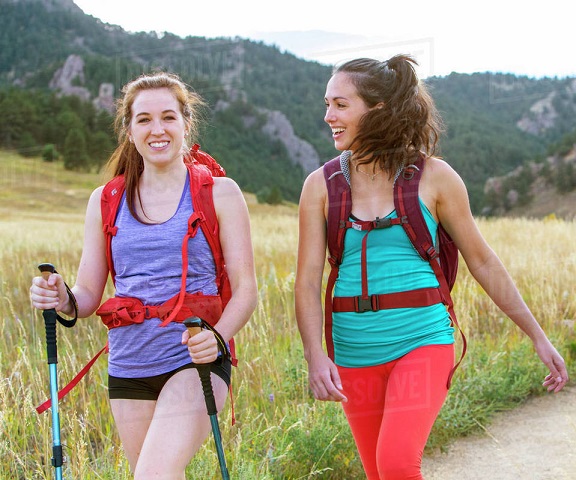 Most people do not seem to understand the benefit of hiking. Yes, it is not an easy thing to do. But if you can do it in a sustainable level, your body will benefit greatly. The article below explains the reasons why.
Most people do not seem to understand the benefit of hiking. Yes, it is not an easy thing to do. But if you can do it in a sustainable level, your body will benefit greatly. The article below explains the reasons why.
At first, walking and hiking may sound like two words for the same form of exercise. The footwear and scenery may vary, but the lower-body mechanics seem the same. Surprisingly, though, they’re radically different. Research shows that your joints, heart and muscles perform in distinct ways during a hike compared to what they do during a jaunt around the block. “When you walk on a level surface, your body does a really good job of what’s known as passive dynamics,” says Daniel Ferris, a professor of engineering and biomechanics at the University of Florida. Your walking stride, he says, is like the swing of a pendulum. “Thanks to gravitational and kinetic energy, if I start that pendulum swinging, it’s going to keep moving back and forth for a long time without any additional energy input,” he says.
Like a pendulum, walking on flat terrain allows you to keep moving with little effort. “But when you walk on uneven terrain”—the type you’d encounter on nature trails, deep-sand beaches or other natural surfaces— “that knocks out a lot of that energy transfer,” Ferris says. “Your heart rate and metabolic rate go up, and you burn more calories.” In fact, hiking on uneven terrain increases the amount of energy your body uses by 28% compared to walking on flat ground, Ferris found in a study he conducted at the University of Michigan.
The varying ground slopes you encounter while hiking also make it different from flat-ground walking. Paths that go up, down and sideways require subtle shifts in the way your leg muscles lengthen or shorten while performing work, and those shifts increase the amount of energy you’re expending during your trek. But the benefits of hiking extend well beyond the extra calorie burn. Navigating uneven ground—whether you’re hiking or trail-running—recruits different muscles than you would use on flat, man-made surfaces. “You’re turning on and strengthening a lot of muscles in your hips and knees and ankles that you don’t normally use,” Ferris says.
Note: This article was published on the Eating Well magazine www.eatingwell.com
Follow CSMS Magazine on Facebook: www.facebook.com/csmsmagazine
On Twitter: www.twitter.com/csmsmaga

